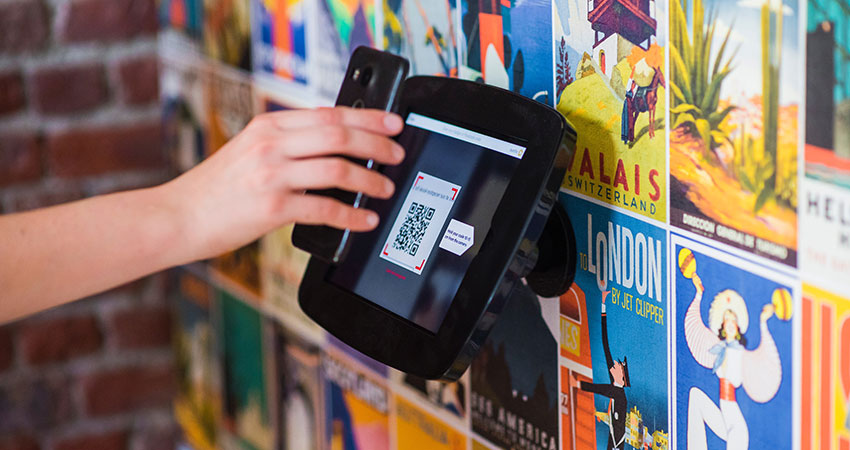Photo credit: Proxyclick Visitor Management System on Unsplash
GS1, the standards body for supply chains, has released a readiness test kit to help retailers, brands and manufacturers and solution providers assess where they are in the journey toward industry-wide adoption of data-rich 2D barcodes on product packaging.
And while some retailers have balked at the transition cost of upgrading POS hardware and software, GSI said most are onboard with the program of migrating toward a 21st century product information platform that benefits all parties – retailers, CPGs, solution providers and consumers.
The program is called Sunrise 2027, as the 50-year-old UPC code is not going away anytime soon, unlike other “sunset” programs like the coming demise of third-party cookies for consumer data tracking amid growing privacy concerns.
GS1 recently conducted a pilot with three retailers and their solution providers, which found POS systems need upgrades in order to process 2D barcodes – essentially the same as QR codes – interpret data and make the checkout process efficient. Scanning, processing and data storage issues emerged, pointing out the need for POS hardware and software to evolve.
“While the transition to 2D barcodes is still in its infancy, we understand that benefits around sustainability, traceability, supply chain visibility and meeting the needs of consumers are creating a great deal of interest across industry,” said Marcia Mendez, senior program manager for Walmart in a statement. “Ultimately, suppliers will likely drive this evolution as they increasingly label their products with 2D barcodes; however, retailers will need to ensure that not only can they scan 2D barcodes, but also read and ingest the data, which we’ve learned are two very different capabilities during the pilot project.”
Carrie Wilkie, SVP of GS1 US, said the effort to create standardization goes back to 2017 and 2018, when use of QR codes began growing. Their adoption has grown significantly in the pandemic era, with the desire for more contactless checkout capabilities.
“2D has been used a lot in Europe for things like tobacco products, to tag and trace for tax ID purposes,” Wilkie said. “GS1 worked with our solution partner Digimarc, known for digital watermarks embedded in packaging. It’s a cool technology, where the entire package looks to the scanner like it’s covered in UPC codes, all imperceptible to the human eye, making throughput at POS easier.”
Another driver of Sunrise 2027, Wilkie said, was the desire of CPG manufacturers to have more data-rich product information stored on the packaging that didn’t take up much space, along with consumers’ desire to access that information with a smartphone scan prior to purchase.
“We undertook research with our partner VDC to understand the state of scanning, what consumer brands and retailers were all looking for on packaging, and what comes next,” she said.
Use of 2D barcodes was already well underway in healthcare, for things like unique device IDs, and track/trace of batch numbers and lab codes on pharmaceutical products, “and we thought, why not have this at the POS?” Wilkie said.
“2027 is a date we developed when asked by the industry, a line in the sand regarding what everyone needs to do and by when,” she said. “Not simply admiring the problem, but taking action. We work with industry and solution providers to determine their readiness today, and what systems at the POS need to evolve, upgrading to read 2D symbols and do something with the data. Is preprinted packaging evolving quickly enough?”
Some of the groups GS1 is working with on Sunrise 2027 include the Consumer Goods Forum, the Consumer Brands Association and the FMI/Food Industry Association.
“We want to support brand owners with what they need to do to create a 2D symbol, what they have to do with their packaging,” Wilkie said. “For a period of time, we’ll likely see co-labeled UPC and 2D. And for retailers, it’s not just about reading the data at checkout, but how to ingest and analyze that data, creating use cases for things like discounting on demand, checking expiration dates, checking lot codes so recalled products don’t leave the store, and connecting to loyalty programs.”

